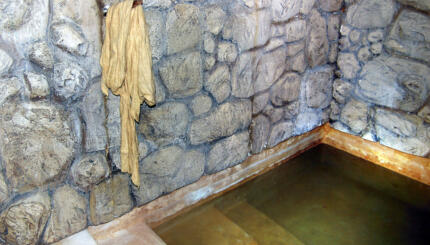Judah the Prince then subdivided Seder Mo’ed (appointed times) into its individual topics, as he did for Seder Zera’im. He began with tractate Shabbat (the Sabbath) because it is first in importance and because it occurs every seven days and its cycle is most frequent in the time scale. In addition the portion of Scripture dealing with Festivals (Leviticus 23) begins with the Sabbath. After Shabbat he placed tractate Eruvin (mixtures) because it is of the same subject matter as Shabbat.
Following this is tractate Pesahim (Passover) because it is the first of the commandments given to us by Moses (Exodus 12). It is also proximate to the Sabbath in the portion of Scripture dealing with the Festivals. After this he placed tractate Shekalim (coins for Temple taxes) according to their sequence in the Torah. And he placed Yoma (the Day of Atonement) after Shekalim, according to their sequence in the Torah, because the precept of Shekalim is in the portion Ki Tisa (Exodus 30), whereas Atonement is in the scriptural portion Ahare Mot (Leviticus 16).
He then completed the subject of the three pilgrimage festivals. Since he had already spoken about Passover above, it remained for him to speak on the subject of Tabernacles and the Festival of Weeks. Concerning the latter, he had nothing to discuss except for those laws that apply to every Festival and those are included in tractate Betzah (egg, also called Yom Tov, holiday). He therefore placed Sukkah (Tabernacles, booths) before Betzah because of the multitude of commandments that apply to Sukkot. Of all the portions [dealing with Holy Days] mentioned in the Bible, there remained only Rosh Hashanah (New Years) and therefore after tractate Betzah he speaks about Rosh Hashanah. Thus were completed the discussions about the topics of the Festivals mentioned in the Torah.
He then began to speak of the topics cited by the prophets and these are the days of fasting ordained by the prophets. He, therefore, placed the topic of Fast Days (Ta’anit) after Rosh Hashanah. After Fast Days he placed Megillah (the Esther scroll) because it is an ordination of the prophets who lived later than those who decreed the fast days. After tractate Megillah, he placed tractate Mo’ed Katan (minor festival days), because there is a connection between it and the time of Purim, in that on both occasions it is forbidden to pronounce eulogies or to fast.
With your help, My Jewish Learning can provide endless opportunities for learning, connection and discovery.
Having completed the discussion of various Festivals and their requirements and all that pertains to them, he concluded the subject with tractate Hagigah (celebration of a feast) which deals with the obligations of the three pilgrimage festivals. He placed it last because its rules are not universally applicable since the obligation rests only upon males as it is written: And all thy males shall appear (Exodus 23:17). Thus, he completed the subdivision of the topics in Seder Mo’ed into twelve tractates.
Reprinted with permission from Maimonides’ Introduction to His Commentary on the Mishnah, translated and annotated by Fred Rosner, and published by Jason Aronson.
Shabbat
Pronounced: shuh-BAHT or shah-BAHT, Origin: Hebrew, the Sabbath, from sundown Friday to sundown Saturday.


